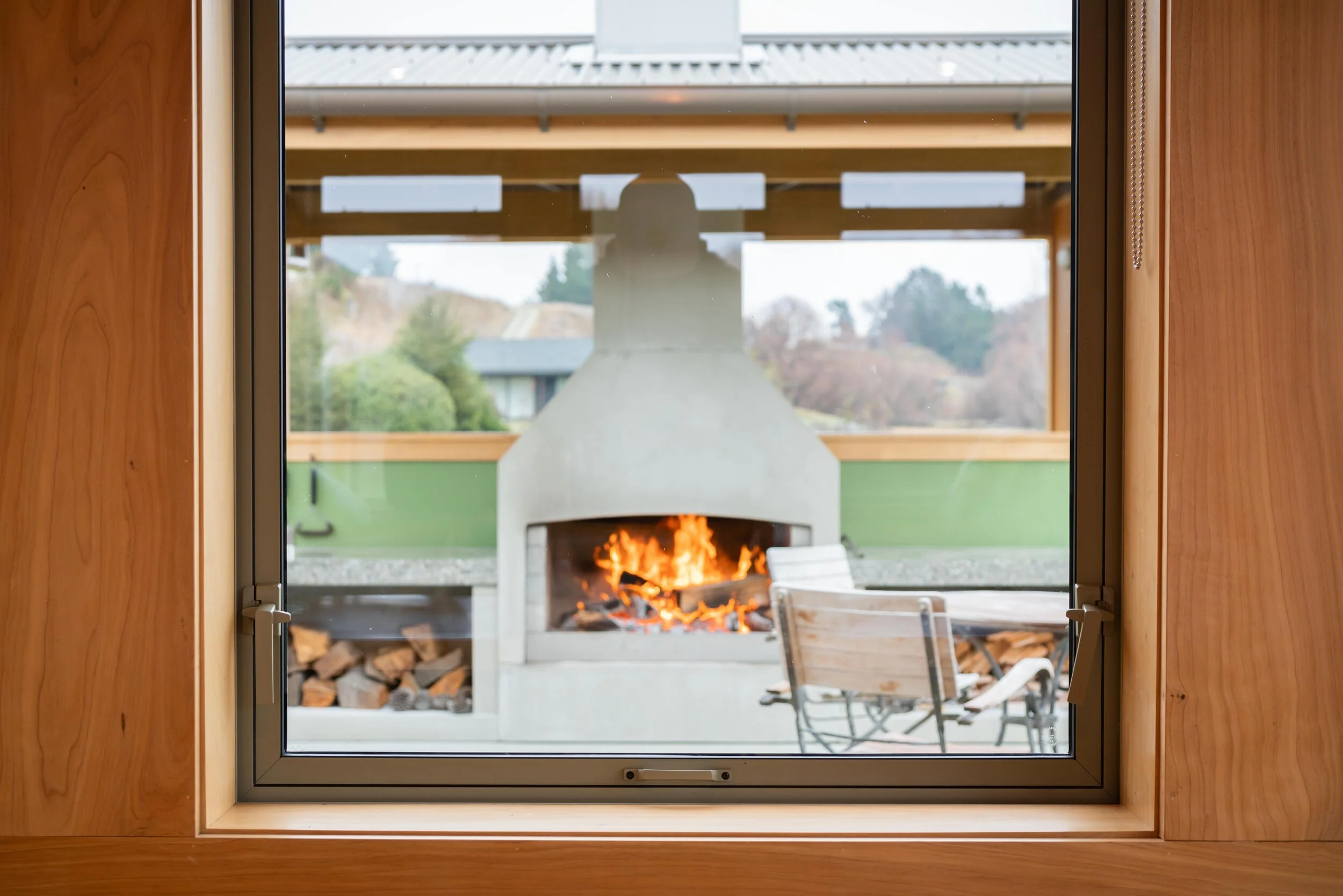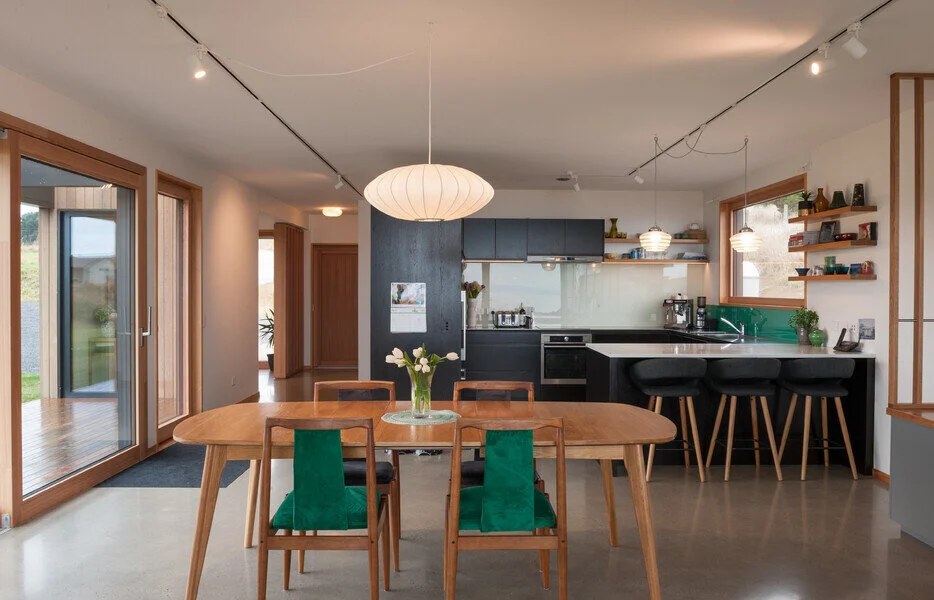Picking The Best Glazing Option For Wanaka’s Climate
The recent cold snap of weather here in Wanaka has reminded us all of the benefits of building an energy-efficient home that helps retain the heat and stay as warm and healthy as possible. One key aspect of ensuring your home stays warm and dry is installing the most effective windows for your space.
Thankfully, here in Aotearoa we’ve come a long way from the single-glazed windows that were typically installed in new homes. Now as part of our nationwide Building Code, we have a minimum energy performance level that all residential new builds have to meet. Unfortunately, even with the minimum requirements detailed in the NZ Building Code, new homes can still experience huge heat loss through the windows. According to BRANZ, windows and doors can be responsible for more heat gain or loss than any other element in an insulated home. In fact, although they may only represent 10% of the surface area of the home, they can account for up to 40% of heat losses if the home is built to little more than the minimum New Zealand Building Code requirements, which so many homes are.
So when choosing your windows and doors, it pays to spend time researching what options are available for you and which will suit your home best. There are so many different options available now, so to help you get your head in the glazing game, we’ve summarised the most popular options below. Before we begin, it’s important to understand that heat is gained and lost through both the glazing and the frame so when choosing your window option, you need to consider both elements. The thermal performance of the glazing and frame is measured with a R-value. The higher the R-value the higher the performance – less heat will transfer from one side to another.
Aluminium Frames
We’ll start with the most common window option, standard aluminium with clear double glazing. Although it is light, strong and low maintenance, aluminium is a poor insulator so if choosing aluminium, it pays to opt for thermal breaks. Thermal breaks place insulation between the interior and exterior part of the frame and BRANZ testing has shown that frames with this feature can be almost 60% more thermally efficient than regular aluminium frames. Double glazed aluminium windows are the NZ Building Code minimum requirement for windows and have a R-value of 0.26. Choosing the thermally broken aluminium with clear double glazing moves the R-value up to 0.31.
To further enhance the performance of your double glazed aluminium windows, you can also add on two other options:
Opt for a different type of glass other than the standard clear glass. Low-emissivity glass, also known as low-E glass, is a microscopically thin metallic coating added to the glazing surface, which lets light through but reflects short-wave infrared radiation. This suppresses the radiant heat flow. Converting one pane of a clear double glazed window pane to low-E glazing is approximately equivalent to adding a third clear pane.
Choose argon-filled double glazed windows. A double glazed window uses two panes, separated by a gap which is filled with either air or an insulating gas, such as argon. Argon gas is a better insulator than air, though slightly more expensive, and in combination with low-E glass and high performance frames can give an excellent thermal performance.
Choosing the thermally broken aluminium with low-E, argon-filled double glazing option increases the R-value up to 0.43.
Pictured here is the All Seasons Thermally Broken Double Glazed Windows with Low-E Excel Glass from our latest completed project, Base Camp Wanaka supplied by Nulook Wanaka.
Timber, uPVC and Fibreglass Frames
Timber, uPVC (unplasticised polyvinyl chloride) and fibreglass frames provide better thermal insulation than aluminium. Although timber is a good insulator and a traditional framing material it also may need to be treated and painted for durability, and to reduce swelling and shrinkage when exposed to rain, condensation and sun. Comparing a timber or uPVC frame to the standard aluminium option sees the R-value go from 0.26 to 0.36 for a timber, fibreglass or uPVC with clear double glazing. If you go on to choose the timber, fibreglass or uPVC with low-E, argon-filled double glazing, the R-value increases to 0.53.
These timber windows are are a combination of wood and aluminium—all the beauty of timber inside, with the durability and low-maintenance of aluminium outside. This stunning Passive House was designed by Team Green Architects based in Queenstown.
No matter which framing option you pick, there is also the option of upgrading your windows further to triple glazing. Worth considering when you learn that triple glazing units with two sealed airspaces have an insulating value approximately three times that of single glazing. If you choose triple glazing, the R-value increases to 1.2 so it’s well worth its while, especially here in Wanaka where we can often begin our day in the sub-zero temperatures in winter. For comparison, the minimum required R-value of a standard insulated wall in climate Zone 3, which is where Wanaka and the rest of the South Island is located, is 2.8.
If we look overseas, where Europe and America are the leading window innovators, you can now choose options of quadruple and quintuple glazing units. The performance of low-E panes has also improved dramatically, with some now performing twice as well as the older low-E versions. This means that double glazing with the new low-E panes can perform as well as some triple glazing but without the extra weight and size.
Most aluminium joinery suppliers will price for standard aluminium double-glazing, with an option to add thermally broken frames and/or low-E glass on top. Generally to add thermally broken frames and low-E glass, you're looking at 25-30% more than the standard double-glazing. If you want to go timber frames with triple glazing, you're looking 40-50% more than the highest-spec aluminium glazing. Essentially, the higher the R-value, the higher the cost so it's important to consider the environment you’re building in and the allowance you have for glazing in your home.
If you’re planning to build here in Wanaka, we’re here to help. As a first step, we’d recommend getting in touch with an architect who knows the Wanaka climate well and then talk through these plans with a knowledgable window supplier, such as our preferred local supplier, Nulook Wanaka.



